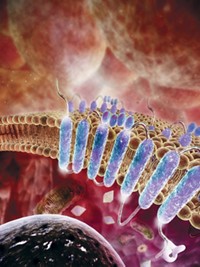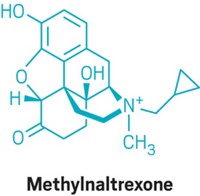Advertisement
Grab your lab coat. Let's get started
Welcome!
Welcome!
Create an account below to get 6 C&EN articles per month, receive newsletters and more - all free.
It seems this is your first time logging in online. Please enter the following information to continue.
As an ACS member you automatically get access to this site. All we need is few more details to create your reading experience.
Not you? Sign in with a different account.
Not you? Sign in with a different account.
ERROR 1
ERROR 1
ERROR 2
ERROR 2
ERROR 2
ERROR 2
ERROR 2
Password and Confirm password must match.
If you have an ACS member number, please enter it here so we can link this account to your membership. (optional)
ERROR 2
ACS values your privacy. By submitting your information, you are gaining access to C&EN and subscribing to our weekly newsletter. We use the information you provide to make your reading experience better, and we will never sell your data to third party members.
Biological Chemistry
Cooling Compounds Conquer Chronic Pain
Interaction with nerves reveals mechanism to block long-term pain
by Sophie L. Rovner
August 30, 2006
| A version of this story appeared in
Volume 84, Issue 36

Once chronic pain, such as pain from an injury or arthritis, gets a grip on the body, it's hard to eradicate. But researchers at the University of Edinburgh, in Scotland, have found a way to treat this pain with cooling chemicals. They've also figured out how these compounds soothe chronic pain, which is often caused by nerve damage.
"We're very excited because there is real difficulty in treating these patients with any known pain-killing drugs," says neuroscientist Susan M. Fleetwood-Walker, who led the study with pharmacologist Rory Mitchell. "Morphine doesn't work well and neither does anything else." The news has "taken the pain world by storm," she adds. "I've had chronic pain patients writing to me, absolutely desperate to get into a clinical study."
One of the significant results of the work is the identification of a natural pain-killing pathway, says University of Southern California pain researcher David D. McKemy. "If we can activate a pathway that's involved in producing natural analgesia, this may give us some therapeutic interventions that are less invasive" than current treatments, he adds.
The Edinburgh researchers studied sensory nerves in the skin that respond to cool temperatures. These nerves also respond to compounds that create a cooling sensation when applied to the skin. Because chemicals are easier to control than temperature, the team used menthol, the cooling ingredient in mint, and icilin, a synthetic cooling compound.
Working with these compounds on rats, the researchers discovered that activating these cool-sensitive nerves inhibits other nerves that carry pain information into the nervous system (Curr. Biol. 2006, 16, 1591).
The cool-sensitive nerves bear a receptor, TRPM8, that's only recently been identified by other researchers, including McKemy. TRPM8 is an ion channel that alters how much sodium and potassium crosses the membrane of these nerve cells, Fleetwood-Walker says. The concentrations of these ions control the cells' release of glutamate. Glutamate released from the TRPM8-containing nerve cells can inhibit other nerve cells that pass along pain messages to the central nervous system. The Edinburgh group found that activating TRPM8 nerve cells with cooling compounds therefore blocks the transmission of pain messages.
In cases of chronic pain, the central nervous system becomes sensitized, so an ordinary touch, such as that from a bed sheet, can be turned into a painful experience. Fortunately, the number of nerves expressing TRPM8 receptors also is increased, so TRPM8 activators are still able to overcome the sensitized-pain state. On the basis of the animal studies, the researchers believe applying icilin or menthol to the skin of a person with this kind of chronic condition "would be enormously effective as a pain-killer," Fleetwood-Walker says. Clinical trials are expected to begin within the year.
Mitchell notes that the animal studies showed best results with a menthol concentration of just 0.3%. Some over-the-counter treatments marketed for short-term pain, such as Bengay Ice, also contain menthol, but at a much higher concentration. At high concentrations, the researchers note, menthol can activate receptors other than TRPM8 in sensory neurons, including those for pain.
"We now understand the mechanism of cool-induced analgesia," says Fleetwood-Walker. "The great advantage is that we now know exactly what we should be targeting with drugs."






Join the conversation
Contact the reporter
Submit a Letter to the Editor for publication
Engage with us on Twitter